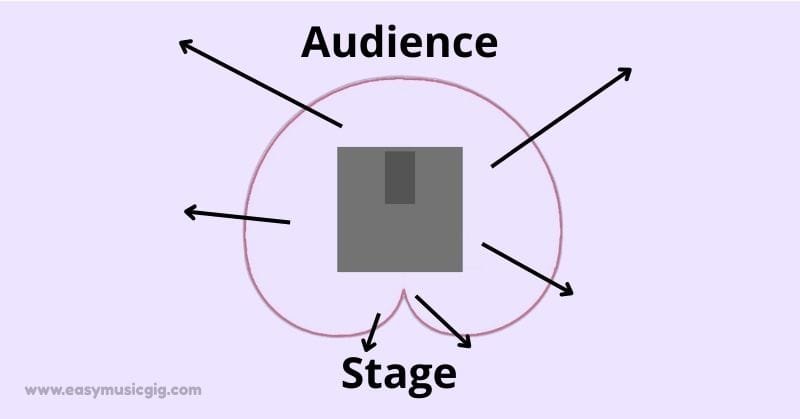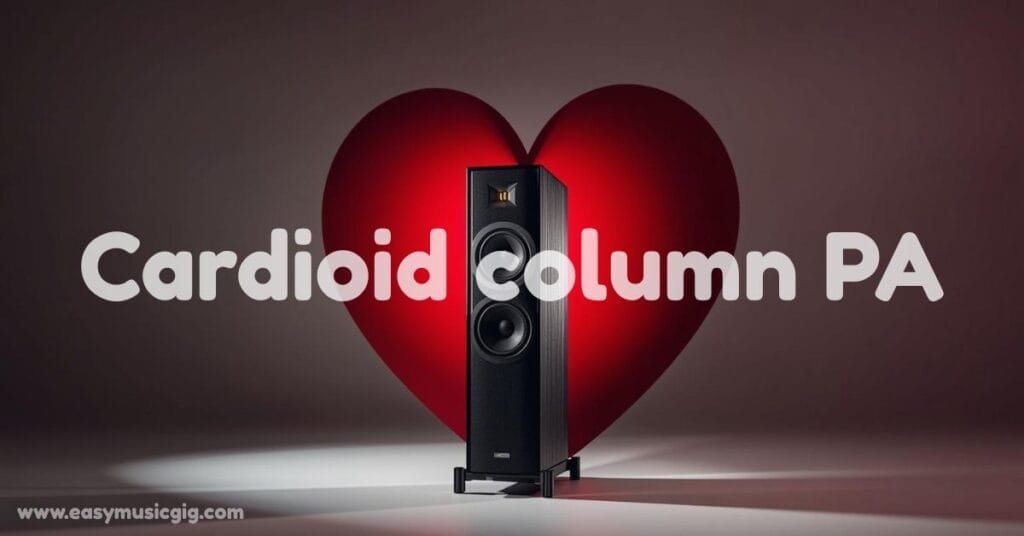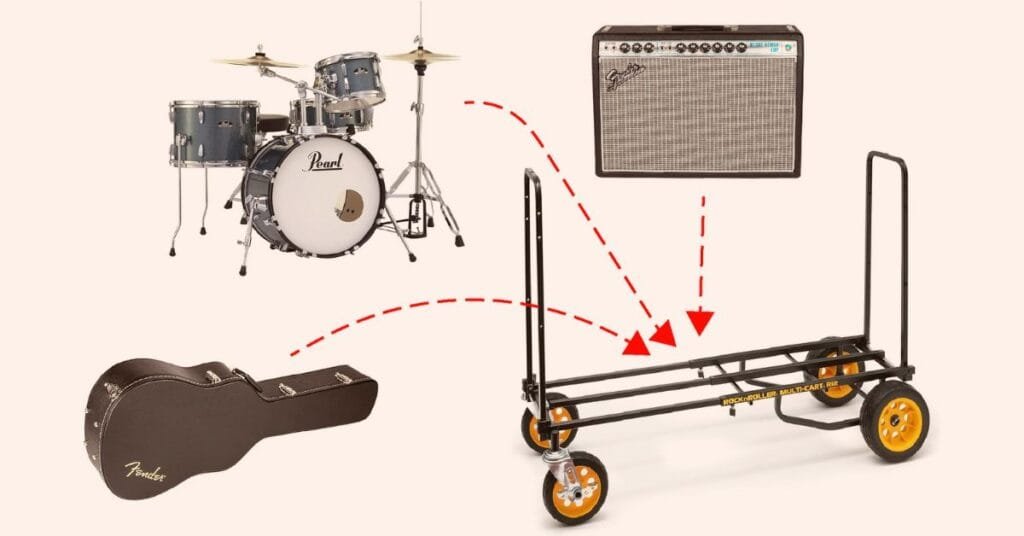What is a cardioid column PA? How directional sound improves your live gigs
Portable column PA systems have become a standard for pretty much every type of small to mid-sized gig where a compact and discreet design is needed. They are small, lightweight, stylish, and powerful enough to cover bars, weddings, and many outdoor situations. A new feature is making its way into the world of column PA systems: The cardioid design.
If you have ever seen a column PA labeled “cardioid” and wondered what it means, keep on reading this article. I will explain it in an easy, understandable way and name a few column PA systems that are built with a cardioid feature.
What does “cardioid” mean in live sound?
The word “cardioid” stands for a heart-shaped sound pattern where the sound is normally projected forward, while it is reduced behind the speaker. Many will recognize “cardioid” from microphone terminology. A cardioid microphone picks up sound mainly from the front and much less from the back, helping in feedback control and unwanted noise.

Column PA systems with the cardioid feature work the same way, making our performances more pleasant. Not only does the band behind get an attenuated sound, but it also helps with unwanted frequencies bouncing off the walls behind us.
How a cardioid column PA works
The column part of these PAs has many small speakers stacked vertically, providing a wider horizontal and a narrower vertical coverage compared to standard speakers. This is perfect for smaller gigs, but the subwoofer radiates its low frequencies in all directions.
This is where cardioid speaker engineering comes in. There are two ways this can be achieved:
- Passive cardioid design:
Uses physical acoustical elements to achieve the cardioid sound pattern. This is done by placing certain elements, such as chambers and ports, in strategic places. This type of cardioid design reduces low frequencies purely through the physical design of the enclosure. No DSP or amplification is used to achieve the cardioid sound pattern. The passive design is less adjustable, but simple and power-efficient. - Active cardioid design
The active cardioid design uses amplified drivers and DSP processing to create the cardioid pattern. Techniques like polarity inversion, time alignment, and volume control of the front and rear bass speakers are used. This design allows for more precise control and overall greater low-frequency reduction, but with more components, which affects the price.
Benefits of cardioid sound systems for musicians
Cardioid column PAs shine in small venues where close walls and monitor feedback can become a big problem. By reducing the PA’s volume that gets projected back, performers can concentrate on their performance rather than solving technical issues.
Advantages of cardioid column PA speakers:
- Cleaner and reduced bass
- Less feedback from microphones
- Easier on-stage monitoring – less volume spill from PA
- More consistent sound for the audience
Examples of cardioid column PA systems
1. LD Systems Maui G3 series (Maui 11 G3 / 28 G3 / 44 G2)
The Maui column systems all have cardioid features that work in a passive and active cardioid way.
Their column speakers have a passive cardioid design where the midrange and low-mid frequencies are significantly reduced. The manufacturer specifies an attenuation of 18dB to the rear in the 100 Hz -1 kHz range.
The subwoofer cardioid feature is available when adding an additional subwoofer (active cardioid). The two subwoofers are configured to work in a slightly different way, giving us a -15 dB attenuation of low frequencies in the rear.
Out of the box, only the column part of the Maui series will work in a cardioid pattern. If you want the subwoofer to work in a cardioid manner, you will need an additional active sub.
2. Bose L1 Pro + Sub1/Sub2 modules
Bose is a perfect example of a modular PA system. The L1 Pro 16 and L1 Pro 32 column arrays both can be used with one or two subwoofers: The Bose Sub1 and Sub2.
When two identical subs are used and configured correctly (delay and polarity), we can use them as a cardioid sub system. Working together, we get an increased low end in the front area and a reduced rear bass radiation.
Final thoughts
A cardioid column PA system is designed to send sound to the front (audience) rather than to the back (performers), which is most helpful on small indoor stages. Low-end is usually the biggest issue on stage, so as you noticed, subwoofers are a part of the column PA that uses this feature more often than the column (high-mid) part.
Cardioid PA systems can be both portable and feature a column design, which is still a relatively uncommon combination. This is an innovation that will make your live performances easier than before. Expect to see more manufacturers adding the cardioid feature to column PAs in the near future.
Frequently asked questions about cardioid column PAs
In a PA system, cardioid describes the shape of the sound pattern that the speakers project. Looking from above, it resembles a heart shape, where the sound is focused forward, with a reduced output in the rear. This pattern reduces feedback and reduces sound projection for performers, especially for low-end.
It is not essential, but if you play frequently in tight spaces, where there is a greater chance of feedback, and you are behind the column PA, a cardioid column PA will reduce the volume you hear on stage.
A regular column PA projects sound relatively even in all directions, while a cardioid column PA is designed to reduce sound radiating to the rear. The result is clearer, more controlled audio for the audience and less noise on stage.



